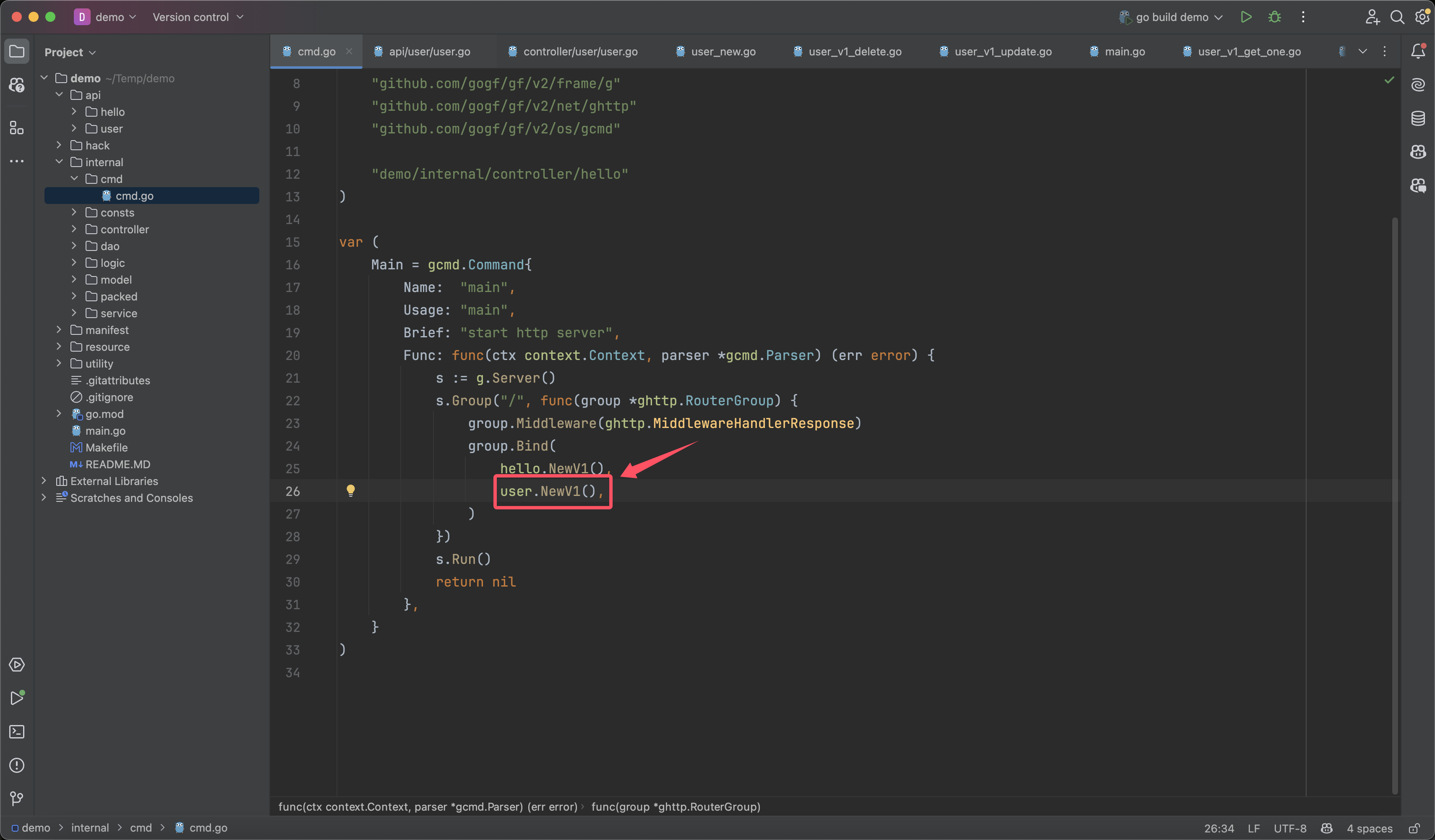Import Database Driver
The GoFrame database component uses an API-based design, separating API and implementation to provide better abstraction and extensibility. Here, we use the MySQL database, so we need to import the specific MySQL driver implementation. We can add _ "github.com/gogf/gf/contrib/drivers/mysql/v2" in main.go.
Sample source code: https://github.com/gogf/quick-demo/blob/main/main.go
package main
import (
_ "demo/internal/packed"
_ "github.com/gogf/gf/contrib/drivers/mysql/v2"
"github.com/gogf/gf/v2/os/gctx"
"demo/internal/cmd"
)
func main() {
cmd.Main.Run(gctx.GetInitCtx())
}
You only need to introduce the database driver once in the project; no further adjustments are needed later. For more support and detailed introduction on database drivers, please refer to the section Database ORM🔥.
If you execute database operations without introducing the database driver, the Database ORM component will report the following error message:
cannot find database driver for specified database type "mysql", did you misspell type name "mysql" or forget importing the database driver? possible reference: https://github.com/gogf/gf/tree/master/contrib/drivers
In the scaffold project template main.go, the import statement contains _ "demo/internal/packed", indicating the resource management of the GoFrame framework, which is an advanced feature. This feature allows any resource to be packaged into the binary file, so when publishing, only one binary file needs to be released. We do not use this feature here, so just understand it for now, and if you're interested, you can check out the relevant section in the development manual later.
Database Configuration
There are mainly two configuration files in the scaffold project template.
CLI Tool Configuration hack/config.yaml
Introduced in previous sections, this configuration file is mainly used for local development. When the cli scaffold tool executes, it will automatically read the configuration content in it.
Sample source code: https://github.com/gogf/quick-demo/blob/main/hack/config.yaml
Business Configuration manifest/config/config.yaml
Mainly maintains configuration information for business project components and business modules, entirely maintained by developers. This configuration file is read when the program starts. The default business configuration provided by the scaffold project template is as follows:
# https://goframe.org/docs/web/server-config-file-template
server:
address: ":8000"
openapiPath: "/api.json"
swaggerPath: "/swagger"
# https://goframe.org/docs/core/glog-config
logger:
level : "all"
stdout: true
# https://goframe.org/docs/core/gdb-config-file
database:
default:
link: "mysql:root:12345678@tcp(127.0.0.1:3306)/test"
The default provides 3 component configurations:
server: Configuration for theWeb Server. The default listening address is:8000, and the API documentation feature is enabled.logger: Configuration for the default log component. The log level is set to output all logs, and all logs will be printed to standard output.database: Configuration for the database component. This is just a template; we need to modify the connection address based on the actual situation.
Each component configuration has a reference link to the official documentation for configuration. Here, we need to modify the connection information in the database configuration to match the actual usable connection information. For detailed introduction on database configuration, please refer to the section: ORM Configuration - File
Sample source code: https://github.com/gogf/quick-demo/blob/main/manifest/config/config.yaml
Add Route Registration
Adding our newly filled API to the route is very simple, as follows:

In the group.Bind method of the grouped routes, you can add our route object through user.NewV1().
Sample source code: https://github.com/gogf/quick-demo/blob/main/internal/cmd/cmd.go
At this point, our API development is complete. The next step is to start the service and perform some API testing to see the effect.
Learning Summary
When we use database functionality, we need to introduce the specific database driver. The GoFrame official repository provides driver implementations for commonly used databases in the form of community components. Our program mainly uses the business configuration, and we need to modify the database connection address within it to the address of the database we set up.
Route registration is very simple; just add a controller object to the group route registration through group.Bind.
So far, we have completed the development of the CRUD API. 👏👏 We mainly focused on the following tasks:
- Database table design
APIAPI definition- Implementation of API business logic
- Simple configuration and route registration
Next, let's start the program to see the effect.